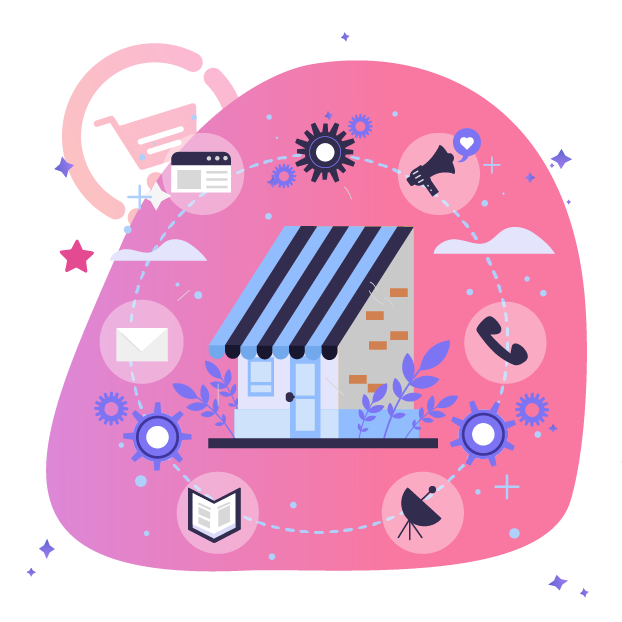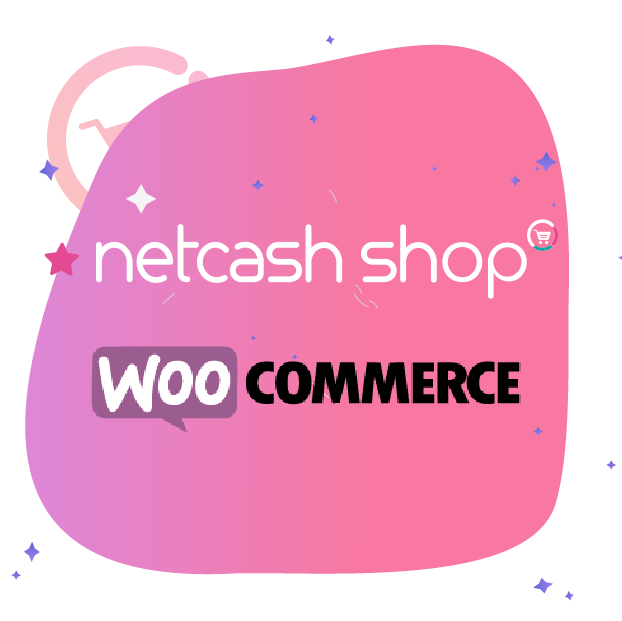
How to sell clothes online with Netcash Shop
February 12, 2024
How to sell health and beauty online with Netcash Shop
April 2, 2025Few industries are growing, changing, and advancing as quickly as eCommerce is, making it more important than ever to stay ahead of the pack. These are the latest eCommerce tech and optimisation trends to watch.
Nothing has taken the world by storm like eCommerce, and it shows no sign of slowing down soon. However, with the dynamic evolution of the industry, there has also been a rise in revolutionary new technologies and techniques that support streamlined operations and elevate customer experience.
Aimed at delivering a personalised shopping experience, innovations from artificial intelligence (AI) to voice commerce are shaping the digital landscape.
So, if you’re looking to get ahead or keep up, this is what to look out for.
Read next: The best apps for eCommerce
eCommerce tools and optimisation: What you need to know
Having tripled in size over the last five years, the eCommerce market is thriving. But to keep up with the times, this is what you need to know about the latest in eCommerce tech, techniques, and optimisation.

Latest eCommerce tools and trends
To improve how brands manage, market, and optimise their online presence and operations, there are several emerging trends shaping eCommerce. These tools empower businesses to thrive in a more competitive market than ever.
Enterprise Resource Planning (ERP)
First up are Enterprise Resource Planning (ERP) solutions. These play a vital role in streamlining operations, enhancing efficiency, and improving overall business performance. Combining various processes and functions into a unified platform, these are some of the key benefits of using an ERP:
- Centralised data management: ERP solutions gather and deliver data from most departments via a centralised approach. This improves data accuracy, avoids duplication, and provides real-time access to information.
- Efficient inventory management: Using an ERP, your business can optimise its inventory management and automate stock monitoring, order fulfilment, and demand projections.
- Seamless order processing: These systems, like BobGo, simplify order processing by refining the workflow from order placement to delivery. Orders are efficiently processed, tracked, and fulfilled.
- Customer relationship management (CRM): Aimed to help businesses build stronger relationships with their customers, ERP solutions integrate CRM functionality. This makes managing customer interactions, tracking sales leads, and providing a personalised customer experience.
- Financial management: Incorporating various robust management modules, ERP solutions handle tasks from accounts payable and receivable, invoicing, and financial reporting.
- Scalability and growth: At their core, ERP solutions are designed to help eCommerce businesses grow and scale. Easily scalable to handle increasing transaction volumes, expanding product catalogues, and multi-channel sales strategies.

Artificial Intelligence & Machine Learning
Artificial intelligence (AI) and machine learning (ML) provide state-of-the-art technology that is at the frontline of revolutionising the eCommerce industry. Enabling machines to learn, reason, and make decisions, this is how AI and ML are changing the customer journey:
- Chatbots and intelligent virtual assistants (IVAs): AI-powered chatbots and IVAs can provide instant customer support, query answering, and purchase assistance.
- AI-powered personalisation: These tools use algorithms to analyse customer data, allowing them to give potential buyers a personalised level of product recommendations, boosting customer engagement and conversions.
- Supply chain optimisation: In this case, AI and ML tools optimise the supply chain by utilising various metrics on inventory levels, demand patterns, and delivery routes.
- Price optimisation and dynamic pricing: Continuing the trend of data analysis, AI and ML systems can use datasets to solve issues and provide projections for market trends, competitor pricing, and customer behaviour. Doing so, these tools allow for dynamic pricing that adjusts in real time based on various factors.
- Fraud detection and prevention: Being able to identify transactional data and patterns, ML systems can indicate potential fraudulent activities to prevent them.
Read next: The best metrics for eCommerce
Voice commerce
Also known as v-commerce, voice commerce is a fast-growing eCommerce technology trend that leverages existing voice assistants and smart devices. Allowing customers to purchase using voice command impacts how customers interact with brands.
Its rise in popularity rests within its convenience, and companies taking advantage of this trend benefit from offering their buyers a more user-friendly shopping experience. Voice commerce is also gaining traction thanks to its promotion of accessibility and inclusivity.
This is shaping the eCommerce landscape into one where individuals with disabilities or those who face challenges with traditional interfaces can engage with brands hands-free. Businesses aiming to take advantage of v-commerce need to implement a robust SEO strategy, establish brand affinity, and foster informative skills.

Technological updates to eCommerce tools
Aside from major shifts in the tech that eCommerce businesses use to enhance day-to-day operations, there is also a sharp increase in advancements to existing tools. These tech updates are paving the way forward when considering how to strengthen shopping convenience and transaction flexibility.
Payment and collection options
These days, it’s all about enticing shoppers with more than just a standout product line. Customers have turned a corner and now demand more freedom and control over their shopping experience. Utilise these trending payment methods:
- Digital wallets: Digital wallets grew famous during the COVID-19 pandemic and have since become the ideal solution for many buyers. These include PayPal, Apple Pay, Google Pay, and Amazon Pay.
- Cryptocurrencies: Having been around for a while, cryptocurrencies like Bitcoin, Ethereum, and Litecoin, eCommerce platforms are starting to accept digital currencies. These transactions provide decentralisation, security, and privacy.
- Buy Now, Pay Later (BNPL): BNPL offerings allow potential buyers to split their purchase amounts into instalments, enabling them to make larger purchases more conveniently.
Mobile commerce and optimisation
It’s no surprise that mobile commerce, or m-commerce, is increasing in popularity thanks to a booming mobile device market. This results in a push for eCommerce growth as businesses strive to cater to mobile users. Enter Progressive Web Apps (PWAs).
PWAs are web applications that provide a native-like experience on mobile devices. These combine the flexibility of the web with the functionality and performance of native apps.
Some benefits to keep in mind include the following:
- Cross-platform compatibility
- Offline functionality
- Fast and responsive performance
- App-like appearance
- Lower development and maintenance costs
- Improved discoverability and shareability

Augmented Reality and Virtual Reality
Two significant eCommerce technology trends that are transforming how customers interact with products and make purchases are augmented reality (AR) and virtual reality (VR). Being able to create interactive and realistic experiences, both are being used to bridge the gap between online and offline shopping.
Overlaying digital information into the real world, AR enhances the shopping experience by allowing buyers to visualise products in their environment. On the other hand, VR creates a simulated world where users fully immerse themselves in a digital shopping journey.
From the inventive Ikea AR showroom to more recent entries such as the Apple Vision Pro, these are some capabilities of these emerging technologies:
- Virtual try-ons
- Virtual showrooms
- Interactive product visualisation
- Virtual events and experiences
Blockchain
With the development of Web3, blockchain technologies have been present for a few years but have only recently gained traction. As a decentralised ledger, the blockchain allows for safe and transparent digital transactions.
Functionally, the blockchain creates a set of transactions in a chain of blocks, ensuring data integrity. For eCommerce, the blockchain is shaping to be an invaluable asset for improving, securing, and streamlining transactions. Diving deeper, blockchain tech also enhances product authenticity and supply chain transparency.
Cloud Computing and Infrastructure as a Service (IaaS)
Enabling businesses to quickly scale their operations, cloud computing and IaaS systems are changing how efficiently an eCommerce company grows. Using a cloud-based eCommerce platform benefits include:
- Flexible computing resources
- Easy data management
- Cost-effective solutions
- Automatic scaling
- Load balancing
- Disaster recovery

eCommerce optimisation and SEO best practices
A vital tool to maximise conversion rates, increase revenue, and expand audience reach, the best eCommerce optimisation techniques continue to be a hot topic. Aiming to create a seamless customer experience, this emerging trend leads many businesses to higher sales and profits.
Considering the far reach that eCommerce optimisations have, many are turning to SEO best practices to improve their website speed, user experience, and eCommerce conversion rate optimisation.
Let’s dive into some optimisation techniques revolutionising eCommerce SEO.
- Boosting site speed: Optimising the site speed of your eCommerce business can boost sales, reducing the bounce rate and increasing conversion rates.
- Enhanced product range: Having high-quality product pages is essential to boost eCommerce conversions by increasing buyer confidence.
- Streamlining navigation: Clear navigation makes it easier for shoppers to locate what they need, increasing their likelihood of proceeding to checkout and converting.
- Personalise user experience: Improve your buyer’s journey by upselling or cross-selling. Implementing a simple additional product suggestion to customers has shown great success in boosting revenue.
- Cater to mobile shoppers: Mobile commerce is growing dramatically, and optimising your site for mobile devices is vital. This includes a responsive design, easy navigation, and significant, clear calls to action.
- Implement A/B testing: A powerful technique to use when identifying pages or on-page elements that need optimising, A/B testing unlocks various potential eCommerce optimisations.
Read next: How to smash your eCommerce goals

Customer experience improvement
Rounding up the top eCommerce trends in tech and tools, there is a clear shift towards improving customer experience. Luckily, there are various new tactics to deliver seamless and personalised buying experiences.
Social commerce
Another booming trend within eCommerce is the emergence of social commerce, which is becoming more popular as a sales channel regardless of your business size. Shoppers are showing a more favourable appreciation to businesses offering them social media shopping.
In the past, potential buyers seemed afraid of this informal way of selling. Still, the most recent TikTok Business report shows that 48% of consumers prefer purchasing directly on the platform. Being able to improve customer engagement, social media selling is an excellent way to take advantage of the growing global purchasing power of younger generations.
Improved customer support
Another crucial pivot in how eCommerce is changing comes from modern shoppers continuing to push for improved post-purchase support. Recently, businesses have realised that customer service is an extension of their brand, and not paying the proper attention to it can be catastrophic.
It’s not just about acknowledging this fact anymore, though. Online shoppers expect a human face or voice to address their concerns effectively. The reasoning is simple — the moment of customer interaction is where service becomes the brand.
This necessitates businesses to think about creatively solving intangibles such as empathy and tone of voice. Beyond that, companies must ensure that customer service agents have all the tools they need to solve customer pain points in rapidly changing situations.

Final thoughts on eCommerce tech tools and optimisation
There you have it — the latest emerging eCommerce tech tools and optimisation techniques. While you’ll need to evaluate which trends to hop onto, keep in mind that online shopping is evolving at a pace never seen before.
Keeping up to date with advancements in data management such as ERPs, buyers journey improvements including AI, ML, AR, and VR, and SEO optimisation trends is crucial.
Extending into payment methods and the blockchain revolution, these trends will shape the landscape of eCommerce.
Staying up to date with new trends and techniques is the first step to success and one of the only ways to truly stay ahead of the pack. So, beat the competition by getting on top of eCommerce tech tools and optimisation.
Read next: How to optimise product marketing
With a knack for strategy and a fire for all things digital, Linda spearheads captivating online campaigns as our Marketing Department’s Campaign Manager. E-commerce, cutting-edge tech – if it lives online and builds brands, Linda’s right at home. When it comes to creative solutions and a can-do spirit, Linda’s the marketing machine that keeps things moving forward.

Subscribe to our mailing list to learn about our new features and marketing tips & tricks.








